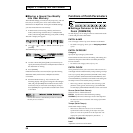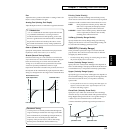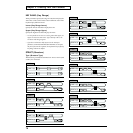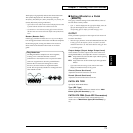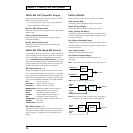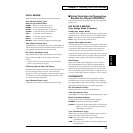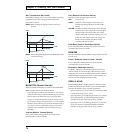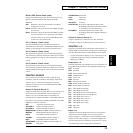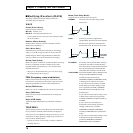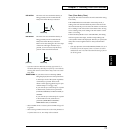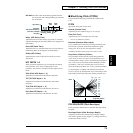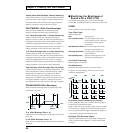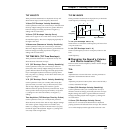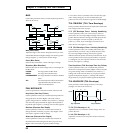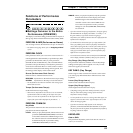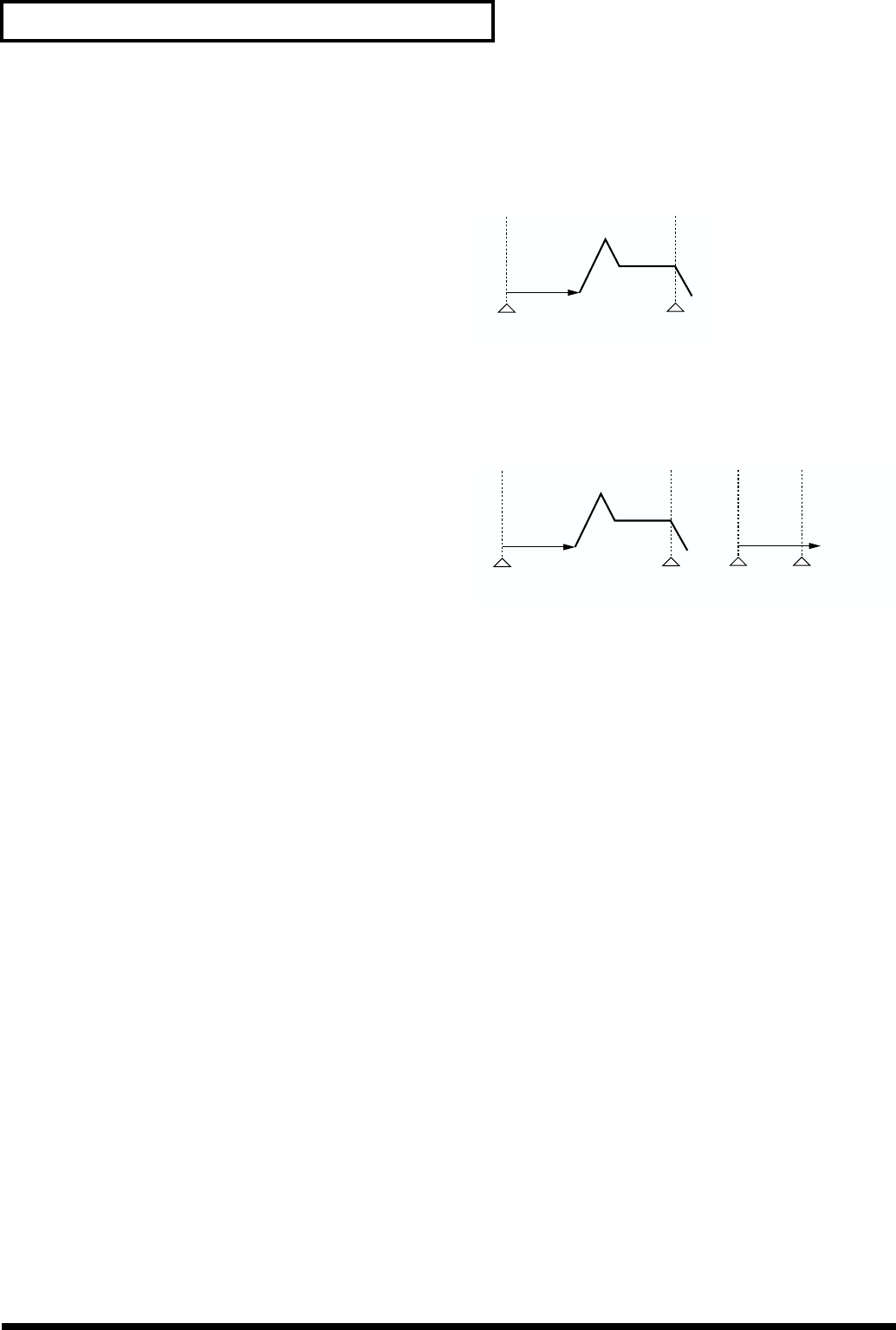
76
Chapter 3. Creating Your Own Sounds
■ Modifying Waveform (WAVE)
This group contains parameters related to the basic
waveform (Wave) of the Tone.
WAVE
Group (Wave Group)
Select the Group of the Wave.
INT-A, B: Internal A, B
EXP-A–E: Wave Expansion Boards A–E
* It is not possible to select a Group of a Wave Expansion Board
that is not installed.
Number (Wave Number)
Select the Wave number. The name of the Wave will be
displayed in parentheses ( ).
Gain (Wave Gain)
Adjust the gain (volume boost) of the Wave. The setting
range is -6–+12 dB, in steps of 6 dB. An increase of 6 dB
doubles the gain. When using the Booster to distort the
sound, it is effective to use the maximum Gain setting.
Switch (Tone Switch)
When you wish to use the Tone, set this ON. When not using
the Tone, set this OFF. In order to make best use of the
available number of simultaneous voices, unused Tones
should be turned off.
* When you use TONE SWITCH [1]–[4] to turn Tones on/off,
this is the parameter that is being set.
FXM (Frequency cross modulation)
FXM is a function that uses frequency modulation to add
new harmonic components to the sound. It can be used as a
simple ring modulator in order to add a metallic flavor.
Switch (FXM Switch)
When you wish to use FXM turn this ON. If not, turn it OFF.
Color (FXM Color)
Select one of four ways in which FXM will use frequency
modulation.
Depth (FXM Depth)
Adjust the depth of the frequency modulation created by
FXM.
TONE DELAY
This parameter produces a time delay from the moment the
key is pressed (or released) until when the Tone begins to
sound. Since you can adjust the timing of each Tone, you can
create effects in which pressing a single key produces two or
more sounds at different times.
* If you do not wish to use Tone Delay, set Mode to NORMAL
and Delay Time to 0.
Mode (Tone Delay Mode)
Select the way in which the Tone will sound.
NORMAL: The Tone will sound after the specified
Delay Time.
fig.3-32.e
HOLD:
If the key is pressed for longer than the
specified Delay Time, the Tone will sound after
the Delay Time. If the key is released earlier
than the Delay Time, the Tone will not sound.
fig.3-33.e
PLAYMATE:
If 2 seconds or more pass before the next key is
pressed, the Tone will sound after the Delay
Time. If less than 2 seconds pass before the next
key is pressed, that interval will become the
Delay Time after which the Tone will sound.
CLOCK-SYNC:
Synchronize the Delay Time to either the Patch
Tempo (PATCH/COMMON/PATCH
CLOCK), the Performance Tempo
(PERFORM/COMMON/PERFORM CLOCK),
or the tempo clock of the XP-30’s system.
If you want to use a fixed tempo in Patch
mode (Tempo parameter setting), set the
Source parameter (PATCH/COMMON/
PATCH CLOCK) to PATCH and set the
desired tempo.
If you want to use the system’s tempo clock
in Patch mode, set the Source parameter
(PATCH/COMMON/PATCH CLOCK) to
SYSTEM.
If you want to use a fixed tempo in
Performance mode (Tempo parameter
setting), set the Source parameter
(PERFORM/COMMON/PERFORM
CLOCK) to PERFORM and set the desired
tempo.
If you want to use the system’s tempo clock
in Performance mode, set the Source
parameter (PERFORM/COMMON/
PERFORM CLOCK) to SYSTEM.
release key
Delay Time
press key
release key
Delay Time
Tone does
not sound
press key
release key press key
Delay
Time



